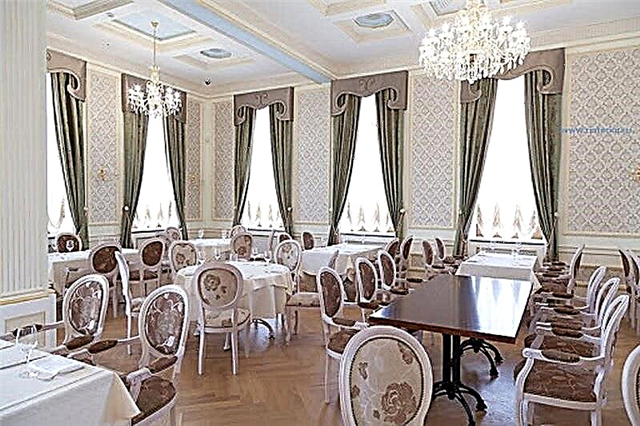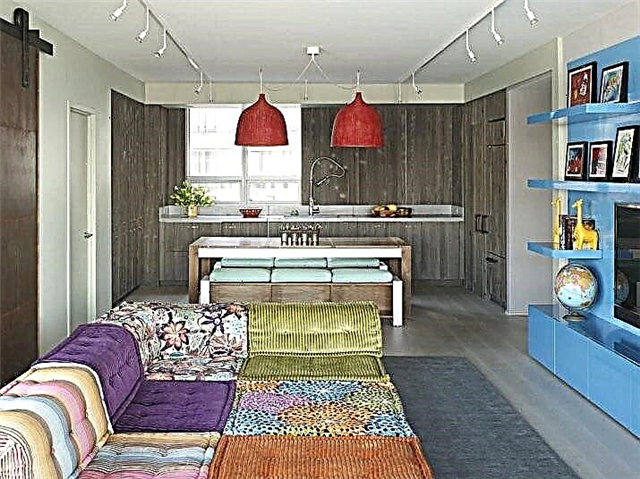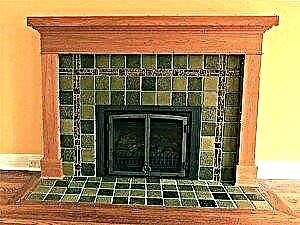view all budget fabrics for vertical blinds
Mid-range fabrics for vertical blinds
see all mid-range fabrics
Elite fabrics for vertical blinds
view all elite fabrics for vertical blinds
Vertical plastic blinds in Balashikha
view all plastic options for vertical blinds
Vertical aluminum blinds in Balashikha
view all color options for aluminum vertical blinds
What is and what is better than horizontal?
Vertical blinds, as the name implies, are a simple and convenient light-protective design, consisting of longitudinal vertical plates - lamellas.
The question arises: how do verticals differ from horizontal, except that they are located vertically rather than horizontally? The main differences are several:
- Aesthetic qualities. If horizontal blinds are distinguished by simplicity of design, durability and good light tightness, which makes them functional, then vertical blinds are also decorative.

- The ability to cover a large area with one cornice. Ghorizontal blinds, as a rule, consist of narrow lamellas and are designed for minimalistic decor of small windows. Vertical models have different widths and easily cover the area of large windows, arches and doorways.
- A variety of materials. Unlike horizontal curtains, which are mainly made of aluminum and plastic, vertical ones exist in textile, plastic, aluminum, and wooden versions.
- A wide range of colors and textures. Due to the variety of materials, vertical blinds are represented by smooth and embossed coatings of absolutely any color. In addition to the fact that the lamellas have a three-dimensional pattern on the surface, they are variable in shape and can be either with a flat or with a wavy edge.
- The original design of the room. Vertical curtains look more comfortable and interesting due to their ability to transmit light. The option of completely deaf overlapping is also possible.
- Convenience of operation. The blinds, assembled at the side of the window opening, and not at the top, continue to be a decorative element. In the upper part of the window, they do not play a decorative role, so the window looks “bare”.
- Practicality. Vertical blinds are wider than horizontal, they are faster and easier to dust if they are made of aluminum, wood or plastic. Fabric options do not require hygienic procedures at all, since they are already saturated with a special composition that does not allow dust and dirt to accumulate. And when the need arises to disinfect the curtains, fabric lamellas can be washed.
- Spectacular photo printing. On vertical blinds, color printing looks more organically due to the larger area and decorative properties of the fabric.


Design and controls
In appearance, vertical blinds look like a series of longitudinal plates of dense fabric or hard materials fixed to the cornice. They move sideways, going behind each other and forming a narrow strip that resembles a curtain. From the point of view of design, the blinds are a little more complicated: a curtain rod with fastening elements and a control mechanism plus accessories. They consist of the following elements:
- The bearing cornice, on which the curtain is fixed and a decorative cornice (grover), which plays the role of a facade.
- Runners for mounting lamellas.
- Lamella holder or "shoulders" - devices connecting vertical plates with a bearing cornice.
- Weights, weighting the canvas.
- A connecting chain running along the bottom edge of the lamellas.
- The control circuit for turning the plates in different positions around the axis.
- Drawstring with weight - for the ability to move and move the curtains.
- Actually, the lamellas are vertical plates forming a light-protective canvas on the window.




Accessories and accessories: ceiling bracket, bracket for grover, fasteners, angles, locks, monofilament, stoppers and c-clips, rings on the rod, chain locks, replacement parts. A description of the accessories is in each instruction. The design may vary slightly depending on the control mechanism.

There are two main types: mechanical and electrical control.
Mechanical is divided into:
- Rope or tape. One part of the mechanism is represented by a coil "snail", on which the control cord is wound, and the other part is a shaft located inside the box. The mechanism is actuated by a slight movement of the hand and is suitable for paintings of aluminum and fabric that do not have a large dead weight,
- Inertial spring. It works due to the energy that is brought in during installation of a spring placed inside the shaft, which drives the entire structure. Designed for blinds made of heavier materials such as wood,
- Cardan and reed gearbox. Outside, this system looks like a loop and a handle (handle) for rotating the web. She is responsible for opening and closing the blade and the rotation of the lamellas along the axis. Suitable for designs of different weights.
Electric (electric control) has no varieties. The closing mechanism is driven by a small electric drive built into the ledge, controlled by the remote control or by pressing a button on the wall switch. The movement of the mechanism is smooth and almost silent.


Another key point to consider in advance is to choose how the blinds move. The first and second types imply a right-handed or left-handed opening, in which the entire canvas goes to one side of the window. They are convenient for window openings up to 200-250 cm.
Third type - This is a shift of the lamellas on both the left and right sides, like conventional curtains. It is recommended to use it with wide cornices from 250 cm for two reasons: for aesthetic purposes and in order to accelerate the process of moving the blinds.
Fourth type not suitable for any windows, but when there are two window openings up to 250 cm wide nearby. With this type of control, the slats are shifted to the middle from both windows.
Fifth type Designed for very wide window openings. In fact, it is a two-sided version, but the left and right canvases are not fixed on one, but on two separate cornices.
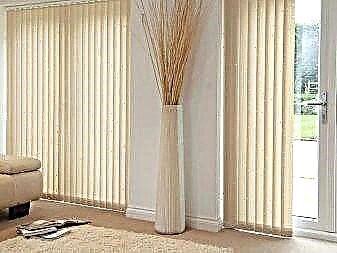
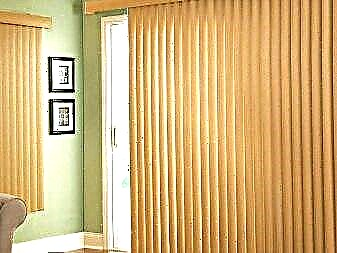
Decorative blinds are divided into:
- Arched. Vertical arched blinds are a canvas made of lamellas, which, like curtains, covers the entire space from the cornice to the floor, while having different lengths of plates, or, like the lambrequin, covers only the top of the window. A color combination of these options is possible. Design features are the flexibility of the cornice, the profile of which is able to take the desired shape with angles of up to 55 degrees relative to the horizontal line. With its flexibility, it has special stiffeners that hold their shape and ensure reliable operation. Decorative cornice in the design is missing.
- Inclined. This is a solution to the problem of window shading of an unusual shape. Inclined vertical blinds are made according to individual measurements with different lengths of plastic or fabric plates. Fabrics are more suitable for rooms in which there is no need to completely block natural light, and plastic ones are useful where complete darkness is desired.


The advantages of this type of blinds are several:
- The ability to create a unique interior.
- Organic combination of different materials.
- Reliability and durability of a design.
- Convenience and practicality.
- Easy control with chain and cord.

Arched and inclined blinds are necessary for installation on non-standard windows: triangular, bay windows, trapezoidal shapes, in the form of a beveled quadrangle. Most types are suitable for sliding windows:
- Cascading or multifactorial. These are canvases on which intricate patterns, patterns, waves, arches, optical illusions are created using a combination of different textures and shades. Various options are possible: a continuous canvas with a pattern on the lamellas, curly louvres, lambrequins and blinds on the floor, several layers of lamella plates. In this case, the edges of the lamellas can be straight and wavy, and the lower edge is even, rounded, pointed, or beveled.

- Lightproof (Blackout). Blackout is not a form of construction, but the type of fabric from which washable lamellas for blinds and roller blinds are made. This is a material of two or three layers, which has the unique property of blocking sunlight and UV rays, is capable of high-quality thermal insulation and sound insulation. At the same time, the fabric is characterized by high aesthetic qualities and practicality. It does not fade, retains its shape after washing, is durable. Special impregnation does not allow dirt to accumulate on the surface of the plates, such as street and room dust. Blackout curtains are performed in all types of structures and with all kinds of control mechanisms.

- With photo printing. Due to the fact that the curtains of this type are wide and dense, they are ideal for drawing. The drawing is applied with paint, which is distinguished by color saturation, resistance to fading and fading, environmental friendliness. Heat treatment of the fabric during printing makes the design resistant to wet cleaning and washing. The image can be absolutely anything: the company logo in the office, the parade of the planets in the children's bedroom, the rainforest in the bathroom and any other story that just appears in your head.

- String (Breeze, Rain). An interesting variety of window paintings that consist of filament (rope) lamellas. They transmit rays of diffused light and play the role of a decorative element in the interior, but at the same time dense enough to cope with the function of curtains. The main difference from dense curtains is that they do not have weighting agents in the lower part. A “brush” of ropes freely falls to the floor. Using this look, you can give the interior softness and comfort. They exist in three color options: plain (classic), in bicolor with alternating colors in one row and two rows of different colors, multicolor (multi). They perfectly cope with the light protection function and are used not only on windows, but also as curtains in doorways or instead of dense partitions for zoning a room.


- Harmonic. Another kind of blinds as dividing the room into zones or door ceilings for those who are not suitable for rigid static structures. The main difference from window blinds is that the narrow plates of the door leaf, which fold like an accordion, are a single whole. There are no gaps between them, and such doors open only on one side. They are stable, compact, ergonomic and durable, but not suitable for use on windows.

Materials
Cornices for blinds are made of aluminum, plastic, metal and wood.
Aluminum profile the lightest and most flexible, so it is used for windows of non-standard shapes. Plastic is simple and economical, and is most suitable for office and municipal premises. Metal structures are the most heavyweight and reliable, but inferior in aesthetic qualities to other types. And finally, wood cornices are superior to plastics and metals in beauty, but also at a much higher price. They are distinguished by durability, diverse appearance, and the ability to apply thread. Made from valuable wood.

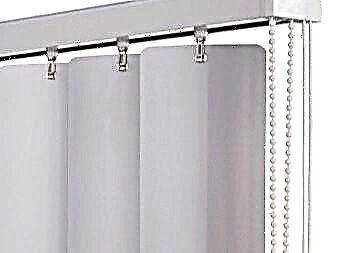

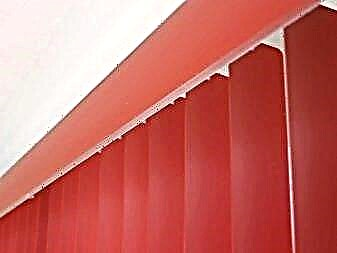
The basis for the manufacture of blinds is more variable. Lamels are:
- Plastic (plastic). Plastic and PVC products have a number of positive operational characteristics: they repel moisture, do not accumulate dust, can be easily disinfected, do not fade and are pleasant to the eyes.
Suitable for rooms that require special sterility conditions: medical rooms, children's rooms, public places.
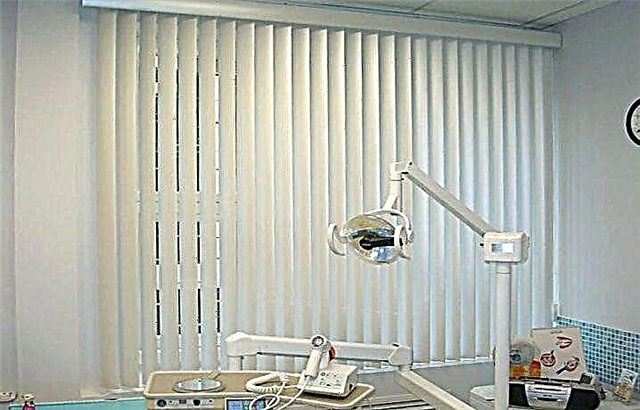
- Fabric. Textile segments are the most decorative and close to the traditional way of window shading. They protect the room from direct sunlight, but transmit and scatter light, which looks natural and beautiful. Variations of colors and combinations are very diverse, as are the types of controls. Among the advantages, it is worth noting the color fastness, protective impregnation against dusting and pollution, the ability to wash without damaging the shape, a nice price.
- Jacquard. Made of high quality polyester. They are distinguished by rigidity, ease of care, a resistant water-repellent and dirt-repellent impregnation layer, wear resistance. At various brightness and variability of colors have a textured surface.
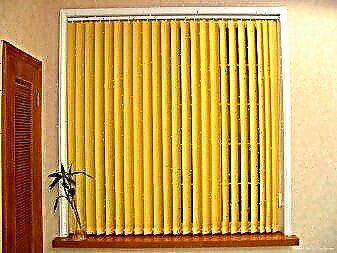

- Aluminum. Lamels of various widths are made of perforated aluminum sheets. Almost any color is available. This species is characterized by a high degree of rigidity, is not afraid of damage, moisture, temperature changes. Care and disinfection are extremely rare - once a month with a dry cloth, several times a year with a wet sponge. The best option for an office, a strict living room, bedroom, office.
- Tulle. When all possible tulle options have already been tried and you want something classic, but non-trivial, tulle blinds will be an excellent solution. This is an unusual airy design made of light flying fabric and plastic. At their core, they are thin monophonic lamellas on which tulle covers are worn. Visually, this creates the effect of lightness and airiness of the canvas, but at the same time they reliably protect from light, gently scatter it and decorate the room. Covers are attached to the runners with special buttons, so it will not be difficult to remove and wash them, and the plastic is resistant to dust and dirt by itself.


- Bamboo Bamboo lamellas are oblong wide plates woven from bamboo straws. Their mesh structure is not able to completely protect the room from bright light, so bamboo blinds are more suitable for rooms that should be well lit. Their natural aesthetics will perfectly complement the interior of the living room with a predominance of natural materials, themed kitchen, cabinet. Among the advantages, it is worth noting the environmental friendliness of the material. They are also characterized by their unpretentiousness, convenience, long service life, and affordable price.
- Wooden. Canvases made of wood are a rarity. They have a lot more weight than fabric or plastic, they fit more into the interior, are more demanding to care, are much more expensive than any other kind. They are distinguished by prestige, elegance and variety in design. Wooden lamellas from different breeds are easily subjected to fine processing, can be smooth, carved, interspersed with other colors, drawing, combined from several types of wood.


- Mirrored. The reflective surface on the window is a bold and unusual solution in the design of the room. This is a powerful technique for visually increasing space and decorating a window at the same time. At the same time, they perform an additional function in the hot season - they reflect UV rays, preventing the room from heating up. “Mirrored” is a conditional name. In fact, the lamellas are not made of heavy glass, but with the use of plastic and reflective film.
- Combined. This name also combines a variety of blinds, the canvas of which consists of lamellas of different colors and textures and the decoration of a window by combining blinds and other types of curtains. You can combine them in a single gamut, using blinds instead of tulle and drapes, or design a window with lamellas and a veil or fabrics.

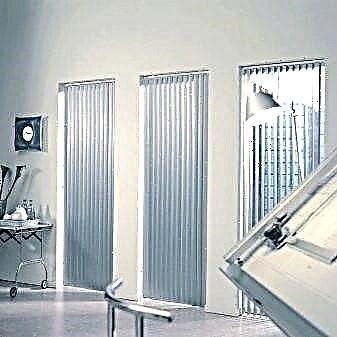
Mounting Options
Differences in species by type of mount:
- Ceiling. The classic version, consisting of cornices, control mechanisms and fittings.
- No drilling. Venetian blinds are fastened with cover brackets or adhesive materials. A practical option for plastic windows, if later it is planned to remove the blinds - there will be no trace in the frame from the cover brackets.
- Wall mounted. They are fixed with brackets, but not to the ceiling, but to the wall.
- The door. Interior blinds accordion on the door.




Dimensions
Vertical blinds are very diverse in length and width. The minimum width is 35 cm, the maximum is 600 cm, with a lamella width of 89 mm. There are lamellas of other widths - 99, 127 mm, and larger wide plates. The final indicator of the width of the blinds is recommended to be a multiple of 8 if they are shifted to one side, and 16 with a two-sided version. The height of the canvas is also variable: a minimum of 40 cm, a maximum of 500 cm.
In office and public buildings, short options are more appropriate, which close the window only to the level of the windowsill. Experiments are permissible in the living space, especially if the windows are low, as vertical blinds visually pull the space up. Combined options, lambrequins and tulle, long lamellas to the floor look beautiful.


Colors and prints
Based on the style and direction of the room, you can choose a different color palette:
- For discreet and minimalist interiors plain canvases of light, pastel and delicate shades are suitable: cream, beige, powder, pistachio, pink, blue.
- Popular contemporary styles can afford a brighter palette: fuchsia, blue, red, emerald, walnut, yellow, lemon.
- Relive the atmosphere help color drawings of a contrasting color on a plain canvas, two-color combinations with different color ratios: alternation, layers, mix.
- Classic combinations: black with red, black and white, white and blue. Peach with a white combination looks good, brown shades with apricot, milk, green, lemon, blue.
- In youth and children's rooms multicolored options and photo printing are appropriate.
- As for the strict, office interiors, they are relevant transparent tulle blinds, neutral shades, blinds with a discreet pattern or company logo.


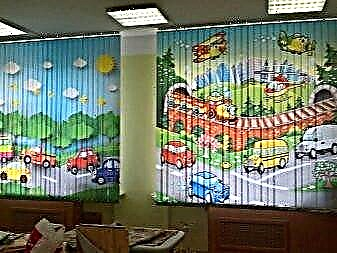
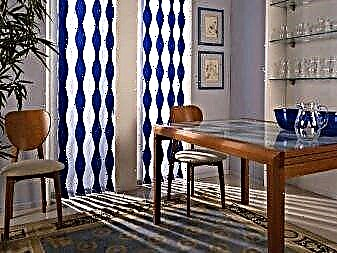
Application of blinds
Due to the characteristics of materials that do not absorb odors, do not accumulate dust and dirt, are easy to clean, repel moisture You can use blinds in the room for any purpose and plan:
- To the kitchen compact models are suitable that do not interfere with the ventilation of the room and reduce the risk of ignition of curtains from the hob near.
- In the pantry You can install accordion blinds, they are suitable for zoning a room or partition into the corridor.
- To the living room It is worth choosing one of the fabric variations, and for the bathroom lamellas made of plastic will be more practical.
- To the bedroom It will be useful to establish reliable protection against light in the form of blackout curtains, and a mirror construction on the loggia or balcony.
- Outside the living area for example, in the office, it is better to give preference to plastic or wood.
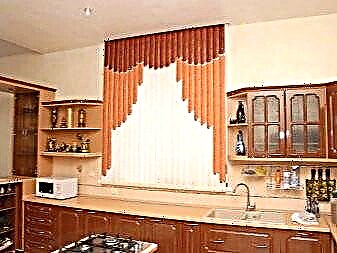

How to choose?
When choosing, it is important to consider:
- Features of the functioning of the room and color scheme.
- Type of mount.
- Control mechanism.
- Materials
- The total weight of the structure.
How to use?
The rules for operating vertical blinds are simple. The slats can be opened 180 degrees, tightly closed or locked at any angle to gently scatter light. You can bring them into one or another position, open, close, rotate using the control circuit (smoothly lower one of its sides).
You can only open the blinds when the lamellas are deployed perpendicular to the window, that is, they form a dense canvas. The simultaneous use of a chain and control cord is not recommended.
How to make a measurement and assemble?
Measuring for any type of fastening takes place according to one scheme: measuring the height from the ceiling / cornice / upper edge of the opening to the windowsill or floor minus 2 cm.The width is measured from edge to edge of the opening plus 7-10 cm so that there are no gaps on the sides. If the wall is narrow and the blinds should cover not only the window, but the entire wall, then measurements from corner to corner minus 2 cm on each side.

Do-it-yourself blind assembly involves a step-by-step guide:
- Preparation of tools: drill, hammer, level, screws, stepladder, meter, pencil.
- Marking the location of the mount on the internal or external brackets.
- Fastening brackets with screws or without drilling (for internal type).
- Fixing cornice.
- Installing the lamellas: pull the louvre by the cord so that the fasteners to which the lamellae will be fastened are positioned correctly, insert the edge of the lamella into the hole of the first mount until the nut hits the hole. Thus fix all lamellas.


How to fix, adjust and remodel?
The instruction manual does not recommend performing complex repairs on their own, but some shortcomings are easily eliminated:
- Replacing lamellas. Removing the lamella is extremely simple: holding it at the very top edge, in the place of attachment to the runner, raise it 3-5 mm up and tilt it towards the high side of the runner with a sharp movement, while lowering your hand down. Insert a new lamella in the same way as when installing the blinds.
- Replacing the chain and cord control, connecting chain and shoulder is also simple.


- The most time consuming process - This is a replacement slider. It requires the accuracy and work of at least two people to dismantle the entire structure, except for the cornice and brackets. The lamels must be removed, the control cord removed, and all the runners. After this, the broken element is replaced, then the cord is passed through the runners, inserted into the ledge, strung on the shaft, the control mechanism is screwed, the lamellas are inserted.
- Shortening lamellas. To reduce the length (only possible with fabric options), you need to remove the weighting agent from the "pocket", cut off the excess, bend and sew a new pocket for the weighting agent.

How to care?
Features of materials do not require special care for the blinds. Once a month you can carry out dry cleaning, several times a year wet. In addition, treat with protective sprays from burnout, moisture and dust, if necessary, wash in the gentle washing mode by placing the lamellas in special washing bags or carefully washing them by hand.

Reviews
Experts in the field of repair and design agree that vertical blinds are a beautiful, original and convenient solution for window decoration with curtains. Owners note the convenience, aesthetics, and practicality of blinds. Plastic models for offices, cozy fabric options for living rooms, which softly and beautifully scatter light, as much as deaf blackout blinds, providing darkness and coolness in a bedroom, comfortable for sleeping, are equally popular.

Beautiful design solutions in the interior
The favorites of designers in interior design are multi-textured canvases with a pattern and an interesting shape of the edge, a combination of fabric curtains with a lambrequin of lamellas or double blinds, models with tulle as covers, various photo blinds.

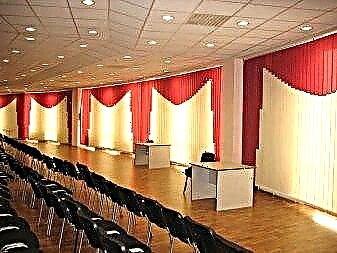
See how to install vertical blinds in the next video.
7 reasons why it is profitable to order Blinds vertical in "Profdekor"
- Production of sun protection systems of any size. Huge selection of products. Guaranteed high quality products. Professional installation services. Free measurement of windows. Prompt delivery in Moscow, Moscow region and Russia. An opportunity to buy Blinds vertical at the favorable price.
The catalog of the Profdekor online store presents a wide selection of vertical blinds for plastic windows that can be bought inexpensively directly on the site. The products are supplied in various sizes and colors - white, beige, black, etc. Vertical blinds are made in a single-color version or decorated with a pattern. Measurement is free. Delivery and professional installation are possible.
Thanks to the original design, vertical blinds look great in rooms with any interior. The systems are made of fabric or plastic, which allows you to choose designs depending on the purpose of the rooms. For example, the kitchen and bathroom are plastic products, the bedroom and living room are fabric. The strict form and direction of the devices visually stretches the walls and raises the ceilings.
Vertical blinds go well with decorative elements like lambrequins or flying curtains. Reliable management makes the system very easy to use. Maintenance of constructions does not cause problems. Due to the vertical orientation, dust and dirt practically does not settle on sunscreens. A vacuum cleaner or a damp cloth is suitable for cleaning the surface.
Vertical Fabric Blinds
Do you want to change the usual fabric curtains? Buy vertical fabric blinds. They are suitable for both home and office interiors. There is no need to be afraid that such blinds will burn out in the sun - they are impregnated with special solutions.
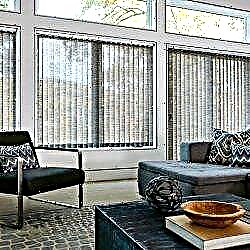
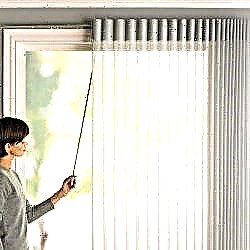
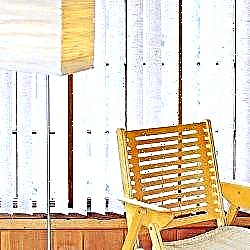


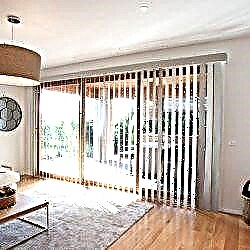



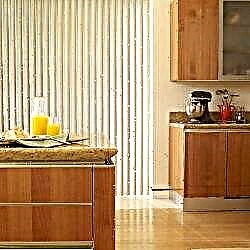





They also visually increase the height of the ceilings in your room. Thanks to them, the room seems more spacious.

Blinds made of plastic
Let's take a closer look at plastic blinds. Through the lamellas of such blinds, the light does not pass at all, thus darkening your room. Plastic is not afraid of temperature changes, it can be used in wet rooms (bathrooms or a pool).

The polluted rooms also hang the aforementioned blinds, as they can be easily cleaned.

Slats for vertical blinds
Vertical slats are the slats that form the blinds. These vertical stripes are made of 4 materials: plastic, metal, wood and fabric. They are hung in spacious rooms, as they are more bulky than horizontal.

The plastic look is found most often, it is the most hygienic and safe, and also has low prices. Wood and metal are less popular materials because of their gravity. However, their advantage is that they wear out more slowly and rarely break.

Usually they are installed in spacious office rooms. Wooden blinds are bought for special types of interiors (Provence, country, retro). Fabric lamellas are linen, jacquard, cotton and others. It happens that the lamellas are combined into a drawing.


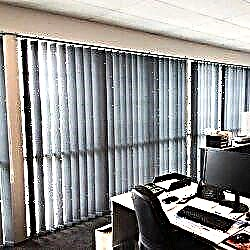
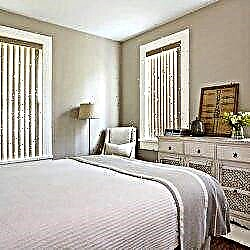


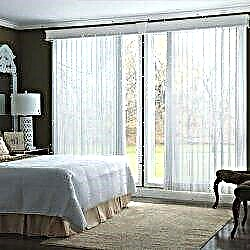






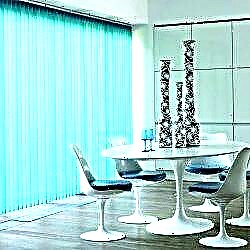

Do not panic if one of the lamellas is broken - they can be bought individually. Experts in the business advise to change several instead of replacing one lamella. Thus, the contrast between the old and new lamellas will be less noticeable, the fresh part will not stand out much.

How to wash the blinds?
Any thing needs to be taken care of - including blinds. Manufacturers impregnate them with flame retardants, which protect against dust, fading and unpleasant odors, but this is not enough to keep the product clean.

Firstly, daily cleaning with a rag or sponge is recommended to maintain their appearance. Secondly, they should be washed every year. To do this, you need to disassemble the blinds: remove the lower chain, remove the weights and, finally, remove the slats from the runners. The lamellas are rolled up and soaked in soapy water. The dirt leaves in about half an hour.

After that, they are hung still wet back into place. Is there an old spot left? Add stain remover to the water. If even he can’t do it, then the only way out is dry cleaning.

It happens that the owners of the blinds clean and in the washing machine. The product is placed in a special fabric bag or sheet and washed in a delicate mode, without spinning. A fabric bag is needed so that the product does not tear. With the aforementioned care, your blinds will look like brand new for a long time.




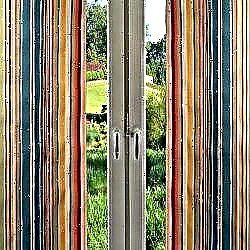
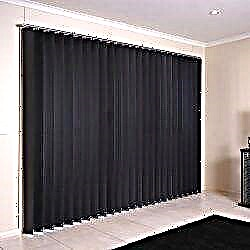
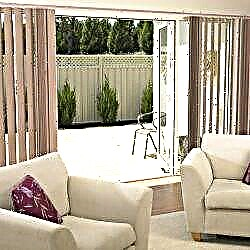


Roll Based Blinds
Roller blinds are gradually becoming a classic. The meaning of the mechanism is the twisting of the fabric web into a roll when lifting up. This type of product has many advantages. For example, the blinds can be of any color, including any pattern that you like.

Also, with the help of roller blinds, it is extremely easy to adjust the illumination of the room. The design allows you to fix the canvas at any level. This is useful when you need to darken a room for a presentation or movie.

This type of blinds is covered with a water-repellent and dustproof layer. There are 3 types of control: using a chain, a spring mechanism or a remote electric drive.



Cornices
The basis of the structure holding the lamellas is a cornice. The eaves for vertical blinds consist of a level with special hooks which fix each lamella. The number of slats can be adjusted.
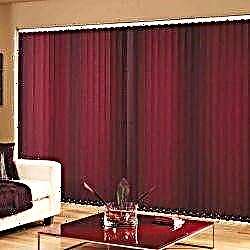






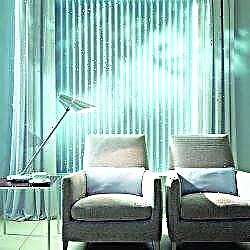

Production materials are also different: wood and aluminum, plastic and metal. The most expensive are wooden cornices because of their attractiveness and durability. It is possible to choose from different types of wood and the presence of carvings.

Metal cornices are less attractive, but also durable. They are coated with a special varnish for corrosion. The most affordable ones are plastic cornices. They are suitable for people who value simplicity.

We buy blinds
You can order vertical blinds at any company manufacturing them. Prices depend on the material of the lamellas, the size of the windows and the quality of the hardware used. You will be offered a catalog that usually offers a considerable assortment of blinds and they will tell you what measurements are needed (or they will give a specialist who will do everything for you).

You can find examples of photos of various vertical curtains on the Internet before going to the store. The choice, in truth, is extremely large, and you will have to sweat a lot before you make your choice.
Types of vertical blinds
For customers, the FOROOM trademark presents two types of blinds designed for openings with plastic windows. Their images are presented above, and then a detailed description of the differences between these products is considered.
Jalousie V-form. Formed by vertically directed fabric lamellas, distinguished by the elegance of shapes and lines. Lamellar strips are mounted on the cornice, their rotation is controlled by a plastic chain descending from one edge of the system.
The texture and tint range of lamellas presented by FOROOM is unusually wide. To choose a certain type of material that matches the interior of the premises (home, office) is easy. Note that fabric lamellas retain their shape and color throughout their entire life.
Jalousie V-FORM PLAST. The difference between the system - a complete set of plastic slats. Such light-protective products are usually used for fencing windows in offices, public, medical and children's institutions, where special conditions of sanitary standards are imposed - regular disinfection of light-protective materials mounted on windows.
Venetian blinds with vertical plastic slats will be the best solution for window openings in cafes and restaurants, where there is a high risk of oil and oil drops falling on the window curtains.
Plastic lamellas are completely inert to liquids and odors, they are indifferent to air humidity and even the open flow of water. Therefore, for the windows in the pool halls, it is precisely the V-FORM PLAST blinds that are selected.
Vertical blind control
The angle of rotation of the lamellas forming the light-protective product is 180 °; position fixation is possible in any of the angles of this range. Blocking direct sunlight by means of V-FORM louvre systems gives soft scattering (for example, turning the lamellas halfway), or completely obstructs external lighting (turning the lamellas to the maximum angle of rotation).
Lamella operations - turning and sliding - are performed by pulling the control chain. According to the terms of the order, a set of vertical blinds is created with one (three of them) options for shifting the slats: from right to left, left to right, or from the center to the edges. Note that the choice of the option to move the blinds does not affect the order price.
Installation of vertical light protection
The use of fencing window openings from excessive natural lighting with vertical systems of blinds has been used for more than three decades. During this period, the three technologies described below for installing louvre systems to various surfaces have been developed.
Fixing blinds V-FORM to the ceiling. Installation is carried out on self-tapping screws with preliminary marking of the position of the cornice to the plane of the window opening. Fasteners are special brackets into which the cornice is inserted before fixing to the ceiling.
Fixing blinds V-FORM to the wall. Additional brackets are required - angular, with a custom spacing from the window. After installing the cornice in the brackets, they are fixed on the wall using self-tapping screws.
Fixing blinds V-FORM to a false ceiling. Since the solid base of the ceiling is removed from the plane of the suspended ARMSTRONG, brackets specially designed for such a surface are required. For their installation, drill holes under the "armstrong" is not necessary.
All custom-made sets of vertical blinds are provided with installation instructions. If necessary, our company is ready to complete the installation of your order.
How to clean vertical blinds
V-FORM fabric lamellas are impregnated with an antistatic compound and they do not need any special cleaning. It is only necessary a couple of times a month to clean them dry with a soft brush (with a vacuum cleaner or manually). It is impossible to erase the lamellar stripes of the blinds, since their dust-repellent characteristics will sharply weaken (antistatic impregnation is “removed”).
Lamellar plastic from the V-FORM PLAST blinds can be washed without periodicity with soapy water and / or disinfectants. It is this advantage - regular sanitary disinfection - that makes V-FORM PLAST vertical blinds popular for medical facilities and, for example, kindergartens.
Why ordering vertical blinds is profitable
If the goal of searching for a blinds system is to control the intensity of sunlight, but the complexity of installation work and the prices of other models of light protection are unacceptable, vertical blinds are the right choice. Indeed, V-FORM fabric / plastic systems will cost you less than other louvres, especially if you need to close wide and high window openings.

